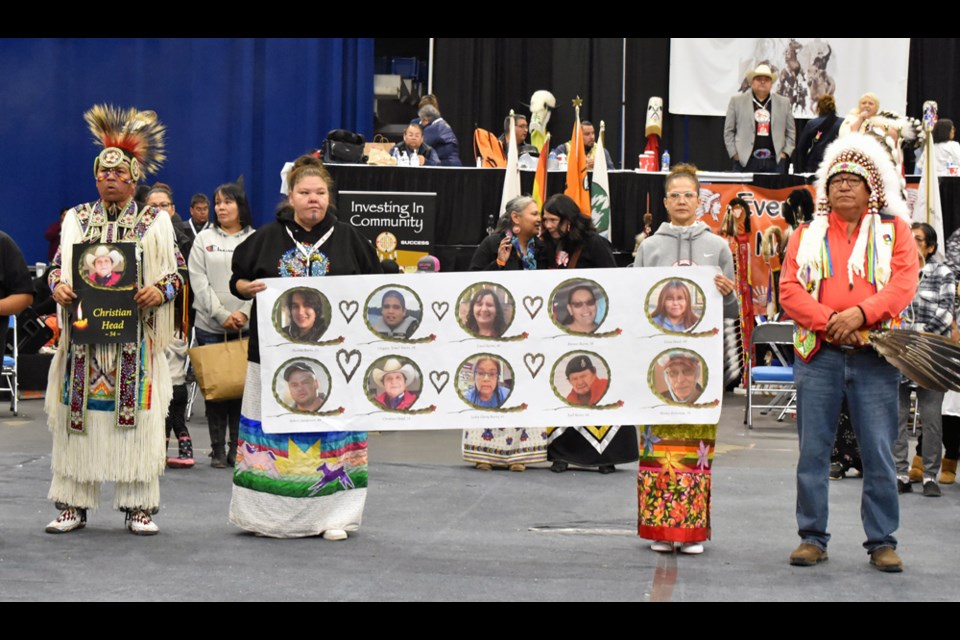SASKATOON — Chief Calvin Sanderson said the tragic events in the James Smith Cree Nation almost two months ago still cast a lingering shadow on their community, with the survivors of the attacks still recovering from the trauma.
Myles Sanderson was the main suspect in a stabbing spree on Sept. 4 that took place at the James Smith Cree Nation and the nearby town of Weldon, which resulted in the death of 10 people while injuring 18. He was arrested on Sept. 7 near Rosthern but later died in the hospital
“Our community went through a lot after the tragedy of Sept. 4. We have numerous First Nations all over Turtle Island, like mental therapists, that are helping the families heal and overcome the trauma,” Chief Sanderson told SASKTODAY.
“Therapists were assigned to each one of the families of the victims. As I have said, we need more mental health professionals and traditional knowledge keepers to come and help continue our sweat lodges and other ceremonies.”
Sanderson is the head of the Chakastaypasin Band, which is part of a Council that includes James Smith Cree Nation Chief Wally Burns and Peter Chapman Chief Rob Head.
A sweat lodge is a purification ceremony performed by many First Nations communities in Canada, while Turtle Island is the traditional name some Indigenous groups use for North America.
He added that the families of the victims and those injured have a long road to healing and recovery from the emotional trauma of losing a loved one. It will be a slow process with the help of mental health professionals and the support of other First Nations communities.
“The families are taking things gradually. The healing process will not happen overnight. It will take months or even years. Some of our [injured] members are still [recovering] in the hospital. We have one band member recently released due to the seriousness of her injuries,” said Sanderson.
“After all these, we plan to meet with the victims and expect them to continue to mourn and grieve. We will be organizing a mental wellness gathering for everyone and even their extended families that were also affected by this tragedy. It is not going to happen overnight.”
Sanderson said the tragic event had their leadership looking into how to ensure families in their respective communities remain safe and avoid future incidents.
“We still have many things to do back home. We are not taking this lightly and are seriously looking into that incident to ensure the safety of our community. Our security and safety are important. We have people controlling the community at large,” added Sanderson.
“They are making sure the houses are safe. Making sure the members are safe. Our Elders and each and everyone are safe. Make sure each individual in and out of our community is safe.”
Sanderson said they are also grateful for the assistance provided by the leadership of the Federation of Sovereign Indigenous Nations and other communities by taking care of food rations and other donations for the grieving families.
“[First Nations communities] in Prince Albert, Melfort and Saskatoon, wherever they are located, were always there providing the needs of our members. They stayed at the hospitals, visited the families of the victims and survivors, and just let them feel safe,” he said.
“That helped a lot because few of our members can’t visit their loved ones. We are grateful for all the help and outpouring of love and support from all over Turtle Island and the world. Our community is going through a lot and it is very emotional.”
Other comments
Saskatchewan Lt.-Gov. Russell Mirasty said the James Smith Cree Nation community — including the tribal bands of Chakastaypasin and Peter Chapman — still needs everyone’s support even almost two months after that tragic day.
“We need to continue to stand by beside them [their communities] while all of the members continue to heal as we all do. Given the tragic circumstances, a lot more assistance must be provided to them. We need to be there for them as their healing journey continues,” Mirasty told SASKTODAY.
FSIN Fourth Vice Chief Aly Bear said the James Smith Cree Nation community faces a long and hard road to recover from the tragedy, but their community showed courage and strength to move forward and heal as one.
“We see our leadership behind their community doing everything they can to develop strategies for this never to happen again. On that day, young and old were victims. We need to look within ourselves, in our own homes wherever we are and think about what we can do to put an end to the violence, put an end to the hurt and put an end to the grieving and put an end to the fear,” said Bear.
“We should all feel safe when we're in our communities, when we're in our homes and when we are at work. This [event] sent shock waves throughout the country and the world. To the James Smith community, we lift you, saying that you don’t need to carry all that burden. The healing will come, and your community will be stronger.”
A touching tribute was held on Sunday, the last day of the Spirit of our Nations powwow event, with everyone present at SaskTel Centre showing their support to all the families and other relatives of the victims. They even paraded with a banner with the photos of those who died.




